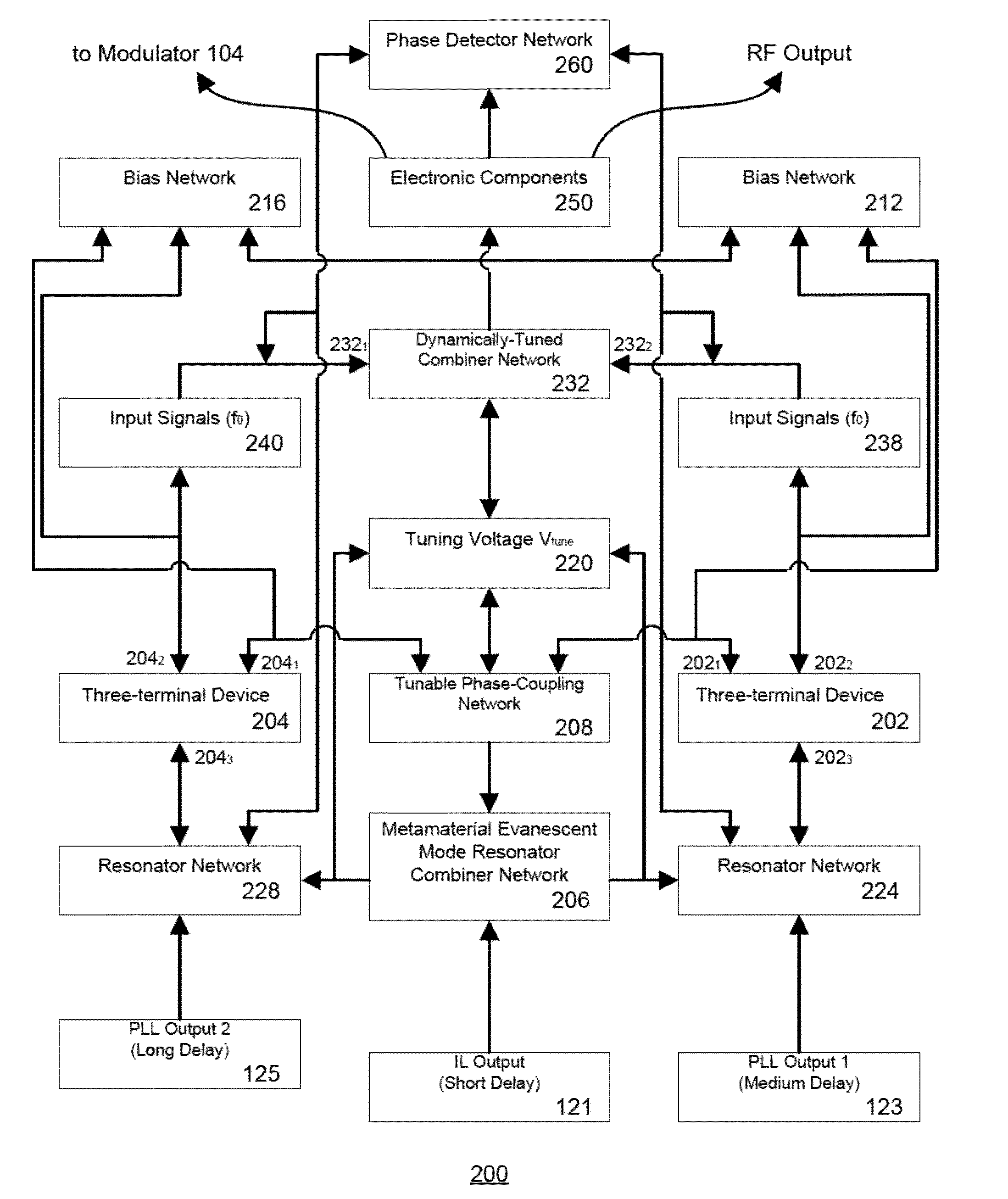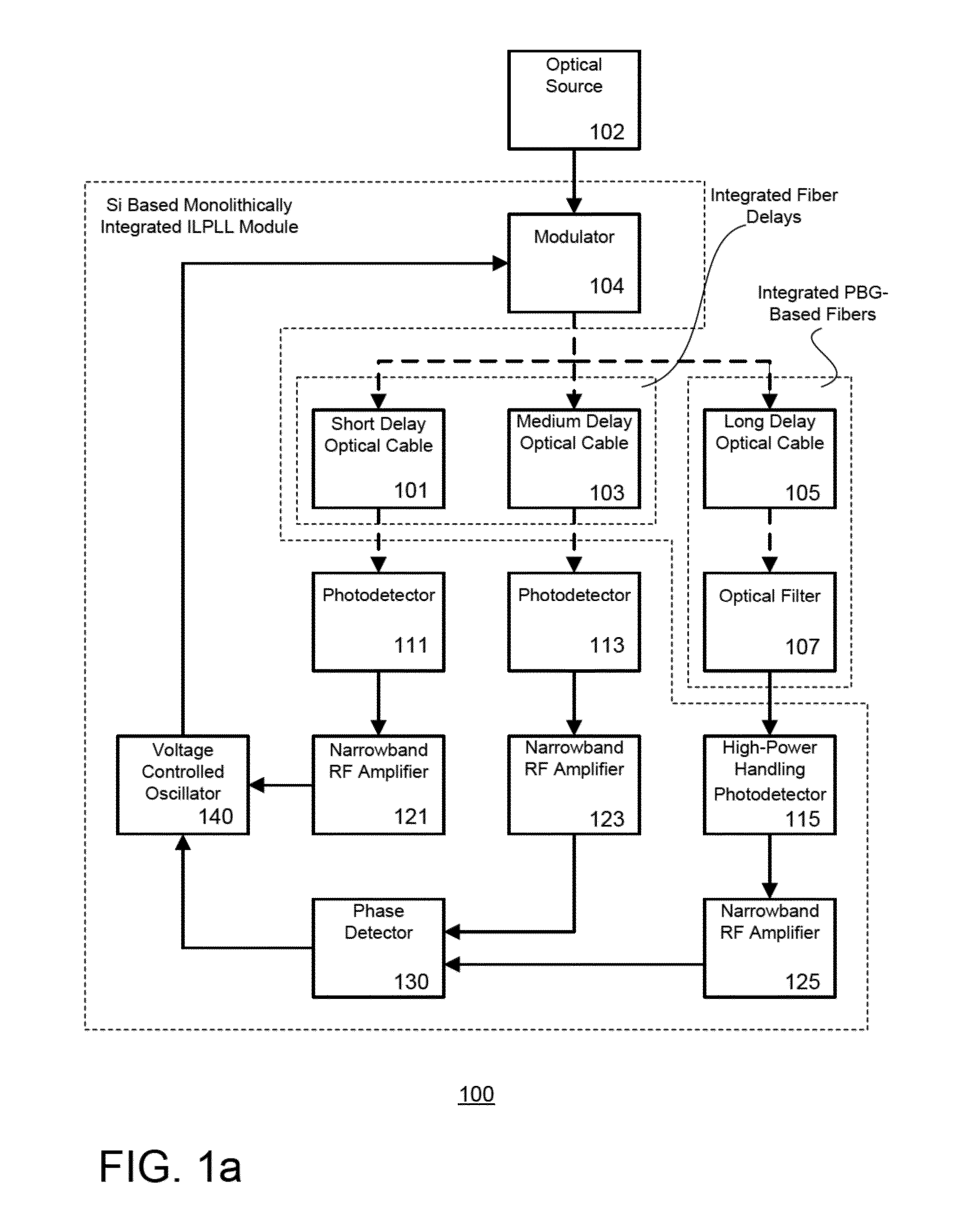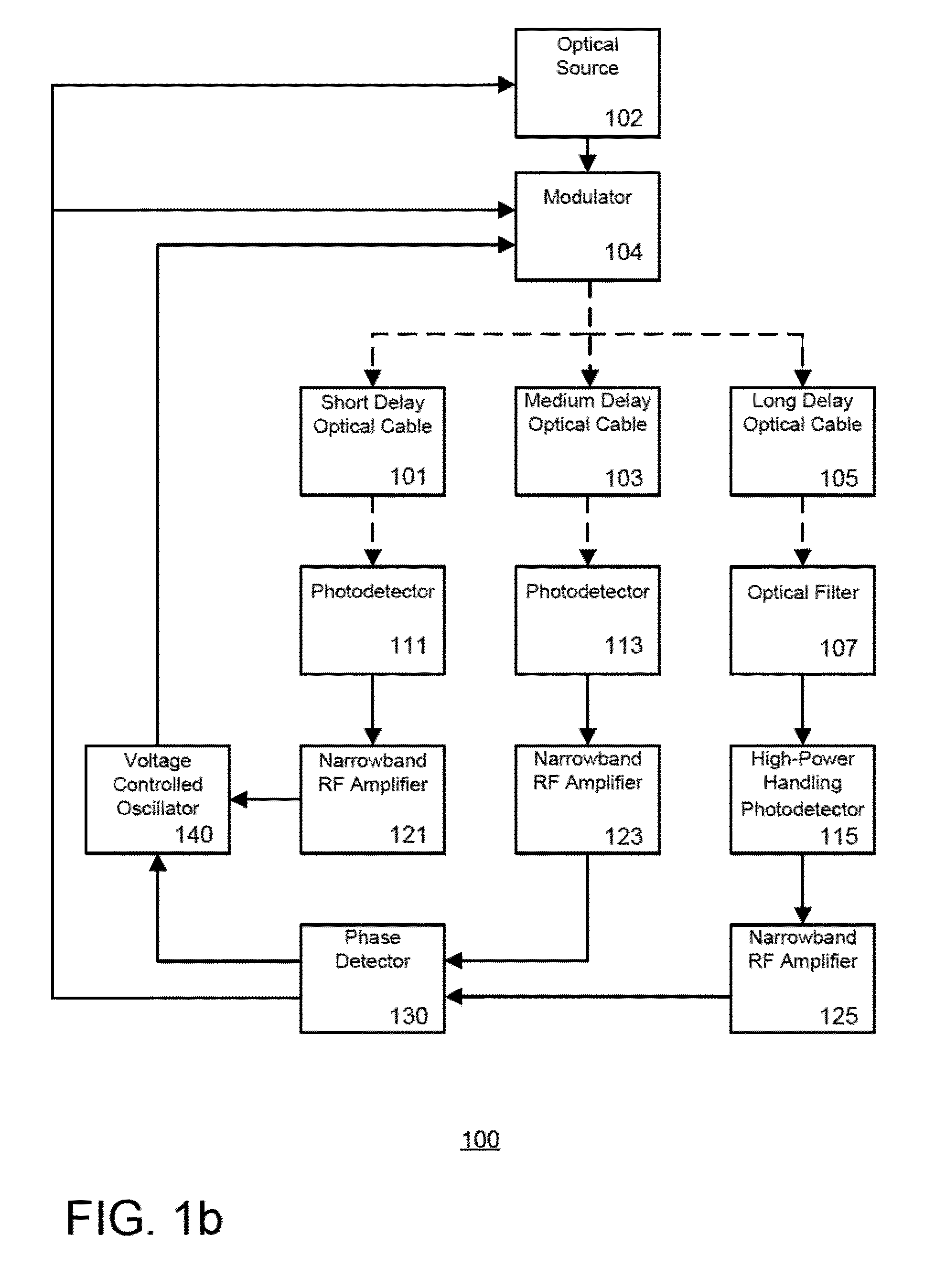Integrated production of self injection locked self phase loop locked optoelectronic oscillator
a technology of optoelectronic oscillators and self-injection, which is applied in the direction of oscillator generators, instruments, electrical equipment, etc., can solve the problems of high power consumption, large volume, and large amount of real estate and cost, and achieve the effect of reducing power consumption
- Summary
- Abstract
- Description
- Claims
- Application Information
AI Technical Summary
Benefits of technology
Problems solved by technology
Method used
Image
Examples
Embodiment Construction
[0024]The present invention details fabrication guidelines of integrated optoelectronic oscillators with frequency and phase stability that are required for both a narrower channel resolution (due to, e.g., reduction of phase noise) as well as a more precisely locked frequency (due to, e.g., reduced temperature sensitivity) than that achieved by conventional OEO systems. As a result, data may be transmitted over a given communication bandwidth at a lower bit error rate. Moreover, the RF and optical signal, given their low phase noise characteristics, could be used as a stable clock for electrical and optical sampling of broadband information in analog to digital converters and a number of other digital processing functions.
[0025]Yet another object of the disclosure is to provide an integrated optoelectronic filtering system having higher frequency selectivity in a relatively small size (compared to the larger size of a higher order electrically realized RF filter), reduced temperatu...
PUM
 Login to View More
Login to View More Abstract
Description
Claims
Application Information
 Login to View More
Login to View More - R&D
- Intellectual Property
- Life Sciences
- Materials
- Tech Scout
- Unparalleled Data Quality
- Higher Quality Content
- 60% Fewer Hallucinations
Browse by: Latest US Patents, China's latest patents, Technical Efficacy Thesaurus, Application Domain, Technology Topic, Popular Technical Reports.
© 2025 PatSnap. All rights reserved.Legal|Privacy policy|Modern Slavery Act Transparency Statement|Sitemap|About US| Contact US: help@patsnap.com



